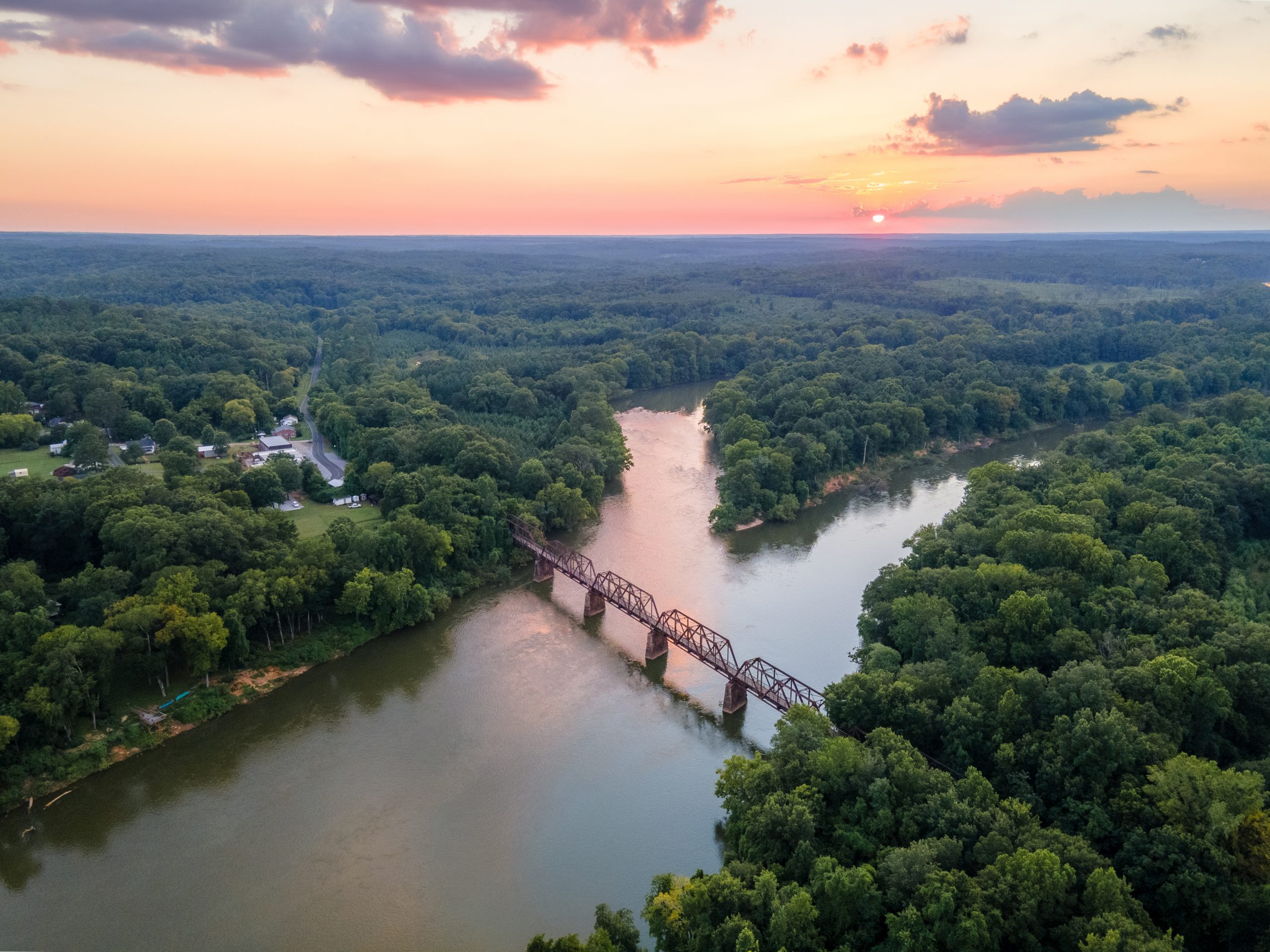
When completed, the Palmetto Trail’s full 500 miles will ultimately wind across South Carolina from the mountains to the sea, showcasing the natural beauty and diverse landscapes of this state. Photography courtesy of Ost Haus Creations
While the Appalachian Trail with its 2,000+ miles from Maine to Georgia is the long-distance American trail that many people think of when they hear the term “thru-hiking,” South Carolina has a quintessential hiking trail of its own. Founded in 1994, the Palmetto Trail was founded with the original plan to use abandoned rail tracks and develop a pathway from Walhalla in the Blue Ridge Mountains to Awendaw along the Intracoastal Waterway.
When completed, the Palmetto Trail’s full 500 miles will ultimately wind across South Carolina from the mountains to the sea, showcasing the natural beauty and diverse landscapes of this state. Today, the trail covers 390 miles with 31 passages ranging from 1.3 to 47 miles in length, offering backcountry paths, rails-to-trails greenways, and even city sidewalks. About 10 parts of the trail remain unfinished because of waterways, needed bridges, mountainous terrain, or private and public property owners who have not signed off on access.
A popular Columbia-area trail section is the 10.2 mile Capital City Passage, which is the first urban passage on the Palmetto Trail. The route runs past city parks and schools, along the University of South Carolina’s Horseshoe, and even across the State Capitol steps. Mary Roe, executive director of Palmetto Conservation, which oversees the trail, is optimistic that all obstacles can be overcome within 10 years to link the trail from one end of the state to the other. “It’s all very doable. It just takes time and money.”
In fact, a recent announcement revealed that a major portion of the Palmetto Trail is expected to be completed near Columbia this year, making it possible for people to walk or bike the trail from central South Carolina to the coast north of Charleston. The Darnall W. and Susan F. Boyd Foundation is providing more than $1.5 million to build a new section of trail that will link two previously completed stretches.
“This grant is a game changer for us,” says Mary. “To be able to offer a safe — and breathtakingly beautiful — way for hikers to get from the urban Capital City passage to connect with our Wateree passage is huge. Based on what we’re hearing from trail users, we think the hike to the top of Cooks Mountain will be the most popular stretch of the trail.”
Every year, an increasing number of hikers seek to “thru hike” the Palmetto Trail. Some of these thru-hikers cover the existing 365 miles of finished and named passages only, while others start at one end and complete the full 500-mile length of the state by using alternate routes to connect incomplete sections. Regardless of how they cover it, a Palmetto Thru-Hiker is defined as a person who completes the Palmetto Trail by hiking it from end to end, including all of the completed passages in a continuous, uninterrupted hike within a 60-day period.
Each thru-hiker has a unique reason for taking on this challenge. Some do it to raise money and awareness for causes near and dear to their hearts. Some do it to stretch their body to its extreme limits. Thru-hiker Gregg Wade was motivated to complete the hike before a hallmark birthday.
Gregg began hiking in May 2019 and finished on Nov. 1, hiking or biking primarily on the weekends. As a long-time South Carolina resident, Gregg says he was able to experience and appreciate our state in a new way. In addition to developing a fresh appreciation for the state’s natural beauty, Gregg and his family made a financial contribution to improve parts of the Palmetto Trail through the Wade Family Charitable Fund.
“The trail is meant to bring people together — young and old, rich and poor,” said the late Anne Springs Close, founding director of Palmetto Conservation. “It’s not just for hardcore backpackers but also for families who want to get out into the woods.”










